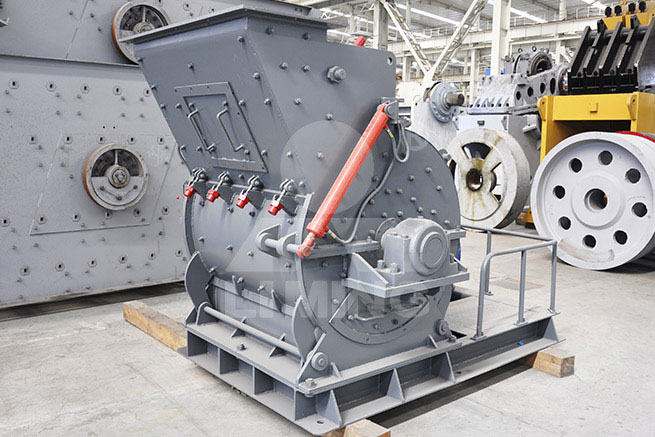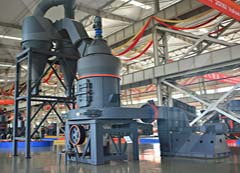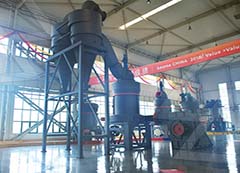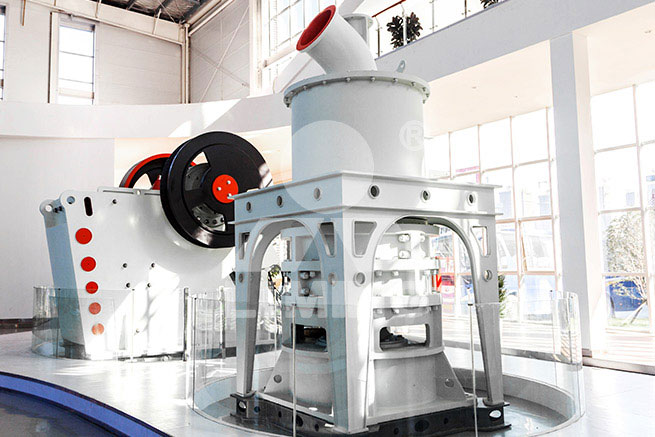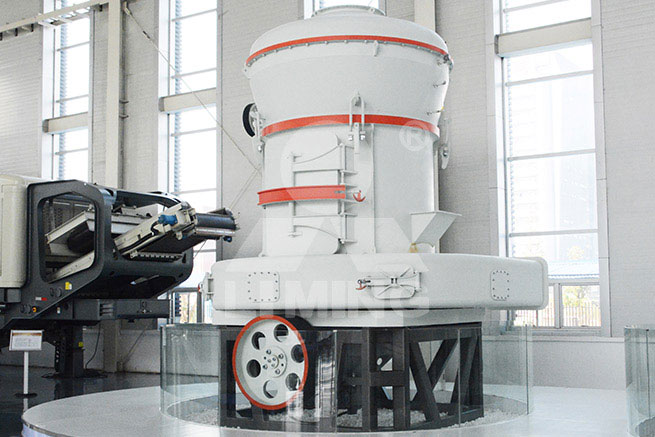how was titanium in 1791 produced

History of Titanium | Titanium Industries | Contact Us Today
History of Titanium and it’s Impact. Titanium was discovered in 1791 by William Gregor, a clergyman and amateur geologist, as an inclusion of a mineral in Cornwall, Great Britain. William recognized the presence of a new element when he found black sand near a stream and observed it to be magnetic. Upon an analysis of this sand, he identified ...
Read More

How was titanium discovered? | History of Titanium - SAM ...
2018-9-13 · The discovery of titanium is inseparable from Reverend William Gregor, an amateur mineralogist in England who first discovered titanium-containing minerals in Cornwall, England, in 1791. At the time, he was a pastor
Read More

How was titanium first discovered? – SidmartinBio
2021-1-22 · H istory. The first titanium mineral, a black sand called menachanite, was discovered in 1791 in Cornwall by the Reverend William Gregor. He analysed it and deduced it was made up of the oxides of iron and an unknown metal, and reported it as such to the Royal Geological Society of Cornwall.
Read More

Titanium (Ti) – a brief history of the origins and ...
At the time, only tiny amounts of the metal were produced, and even in 1948, the worldwide production of titanium was only 3 tons a year. Demand for the metal continued to grow, and by 1956 global production of titanium reached 25,000
Read More

It's Elemental - The Element Titanium
Titanium was discovered in 1791 by the Reverend William Gregor, an English pastor. Pure titanium was first produced by Matthew A. Hunter, an American metallurgist, in 1910. Titanium is the ninth most abundant element in the earth's crust and is primarily found in the minerals rutile (TiO 2 ), ilmenite (FeTiO 3 ) and sphene (CaTiSiO 5 ).
Read More

Early discoveries about titanium – timeline — Science ...
Titanium is light, strong and resistant to corrosion and is the metal of the future.Explore its past in this timeline. 1791 – Titanium discovered. William Gregor, Vicar of Creed Parish in Cornwall and amateur geologist, examines magnetic sand from a local river.
Read More

Titanium, Physical and Chemical Properties | SpringerLink
Titanium is one of the most abundant metals in the Earth's crust, was discovered in 1791 but was produced on industrial scale only in the 1950s because of the difficulties in obtaining it in a pure form due to its reactivity. It is a light metal of high melting point and excellent corrosion resistance. Its oxide is an important white pigment.
Read More

titanium processing | Technology, Methods, & Facts ...
titanium processing, the extraction of titanium from its ores and the preparation of titanium alloys or compounds for use in various products.. Titanium (Ti) is a soft, ductile, silvery gray metal with a melting point of 1,675 °C (3,047 °F). Owing to the formation on its surface of an oxide film that is relatively inert chemically, it has excellent corrosion resistance in most natural ...
Read More

History of Titanium | Titanium Industries | Contact Us Today
History of Titanium and it’s Impact. Titanium was discovered in 1791 by William Gregor, a clergyman and amateur geologist, as an inclusion of a mineral in Cornwall, Great Britain. William recognized the presence of a new element when he found black sand near a stream and observed it to be magnetic. Upon an analysis of this sand, he identified ...
Read More

Do you know the development history of titanium?-
Gregor (Reverend William Gregor, 1762-1817): In 1791, titanium was discovered in the form of titanium-containing minerals in Cornwall, England. The discoverer was the English amateur mineralogist Gregor ( Reverend William Gregor, who was working as a priest in charge of the parish of Creed in Cornwall.
Read More

Early discoveries about titanium – timeline — Science ...
Titanium is light, strong and resistant to corrosion and is the metal of the future.Explore its past in this timeline. 1791 – Titanium discovered. William Gregor, Vicar of Creed Parish in Cornwall and amateur geologist, examines magnetic sand from a local river.
Read More

Titanium: element discovery and titanium industry ...
Titanium: element discovery and development; History; Reverend William Gregor, 1762—1817; The first suspicion of a new, unknown element present in a dark, magnetic iron-sand (ilmenite) in Cornwall (UK) was expressed in 1791 by Gregor, a clergyman and amateur mineralogist.
Read More

Titanium – iDesignWiki
2021-5-29 · Titanium was first identified in 1791 by the Reverend William Gregor.In 1795, Martin Heinrich Klaproth, a German scientist, examined a red mineral identified as Schörl from Hungary.It is a form of rutile (TiO2) and the scientist realised it was the oxide of a previously unknown element which he labelled as titanium.In 1910, Mattew A. Hunter, an employee of
Read More

Titanium, Physical and Chemical Properties | SpringerLink
Titanium is one of the most abundant metals in the Earth's crust, was discovered in 1791 but was produced on industrial scale only in the 1950s because of the difficulties in obtaining it in a pure form due to its reactivity. It is a light metal of high melting point and excellent corrosion resistance. Its oxide is an important white pigment.
Read More

ELEMENT: TITANIUM
2005-12-31 · The metal was a laboratory curiosity until Kroll, in 1946, showed that titanium could be produced commercially by reducing titanium tetrachloride with magnesium. This method is largely used for producing the metal today. The metal can be purified by decomposing the iodide. Properties. Titanium, when pure, is a lustrous, white metal.
Read More

Titania - an overview | ScienceDirect Topics
Titanium (CASRN 7440-32-6) was discovered by the Reverend William Gregor in 1791. Titanium metal is lightweight and has high strength; thus, it is used in aircraft and other structures where cost is not a major factor. It also resists corrosion, making it especially useful in surgical implants and prostheses.
Read More

Titanium timeline | Timetoast timelines
2006-6-15 · Titanium was discovered, included in a mineral in Cornwall, United Kingdom, in 1791 by amateur geologist William Gregor. He recognized the presence of a new element in ilmenite. Jun 15, 1793
Read More

Titanium Facts & Characteristics: Manufacturers
Pure titanium was first produced by Matthew A. Hunter, an American metallurgist, in 1910. Later, in 1932 Titanium metal was first used outside the laboratory setting when William Justin Kroll proved that it can be produced by reducing
Read More

Do you know the development history of titanium?-
Gregor (Reverend William Gregor, 1762-1817): In 1791, titanium was discovered in the form of titanium-containing minerals in Cornwall, England. The discoverer was the English amateur mineralogist Gregor ( Reverend William Gregor, who was working as a priest in charge of the parish of Creed in Cornwall.
Read More

Early discoveries about titanium – timeline — Science ...
Titanium is light, strong and resistant to corrosion and is the metal of the future.Explore its past in this timeline. 1791 – Titanium discovered. William Gregor, Vicar of Creed Parish in Cornwall and amateur geologist, examines magnetic sand from a local river.
Read More

Titanium | Ti (Element) - PubChem
Titanium was discovered in 1791 by the Reverend William Gregor, an English pastor. Pure titanium was first produced by Matthew A. Hunter, an American metallurgist, in 1910. Titanium is the ninth most abundant element in the earth's crust and is primarily found in the minerals rutile (TiO 2 ), ilmenite (FeTiO 3 ) and sphene (CaTiSiO 5 ).
Read More

Titanium: element discovery and titanium industry ...
Titanium: element discovery and development; History; Reverend William Gregor, 1762—1817; The first suspicion of a new, unknown element present in a dark, magnetic iron-sand (ilmenite) in Cornwall (UK) was expressed in 1791 by Gregor, a clergyman and amateur mineralogist.
Read More

Titanium – iDesignWiki
2021-5-29 · Titanium was first identified in 1791 by the Reverend William Gregor.In 1795, Martin Heinrich Klaproth, a German scientist, examined a red mineral identified as Schörl from Hungary.It is a form of rutile (TiO2) and the scientist realised it was the oxide of a previously unknown element which he labelled as titanium.In 1910, Mattew A. Hunter, an employee of
Read More

Titanium, Physical and Chemical Properties | SpringerLink
Titanium is one of the most abundant metals in the Earth's crust, was discovered in 1791 but was produced on industrial scale only in the 1950s because of the difficulties in obtaining it in a pure form due to its reactivity. It is a light metal of high melting point and excellent corrosion resistance. Its oxide is an important white pigment.
Read More

Titanium timeline | Timetoast timelines
2006-6-15 · Titanium was discovered, included in a mineral in Cornwall, United Kingdom, in 1791 by amateur geologist William Gregor. He recognized the presence of a new element in ilmenite. Jun 15, 1793
Read More

Titania - an overview | ScienceDirect Topics
Titanium (CASRN 7440-32-6) was discovered by the Reverend William Gregor in 1791. Titanium metal is lightweight and has high strength; thus, it is used in aircraft and other structures where cost is not a major factor. It also resists corrosion, making it especially useful in surgical implants and prostheses.
Read More

A Review of the Production Cycle of Titanium Dioxide
2014-3-19 · Titanium was discovered in 1791 by the British clergyman and mineralogist William Gregor while analyzing black magnetic sands from Menachan in Cornwall (England). He produced a white metallic oxide from the min-eral menachanite, a variety of ilmenite, and named the new element menachite. A few years after Gregor’s dis-
Read More

Titanium Facts & Characteristics: Manufacturers Guide ...
Pure titanium was first produced by Matthew A. Hunter, an American metallurgist, in 1910. Later, in 1932 Titanium metal was first used outside the laboratory setting when William Justin Kroll proved that it can be produced by reducing titanium
Read More
- << Previous:Iron Ball Mill Cement
- >> Next:Scale Quarrying Large


